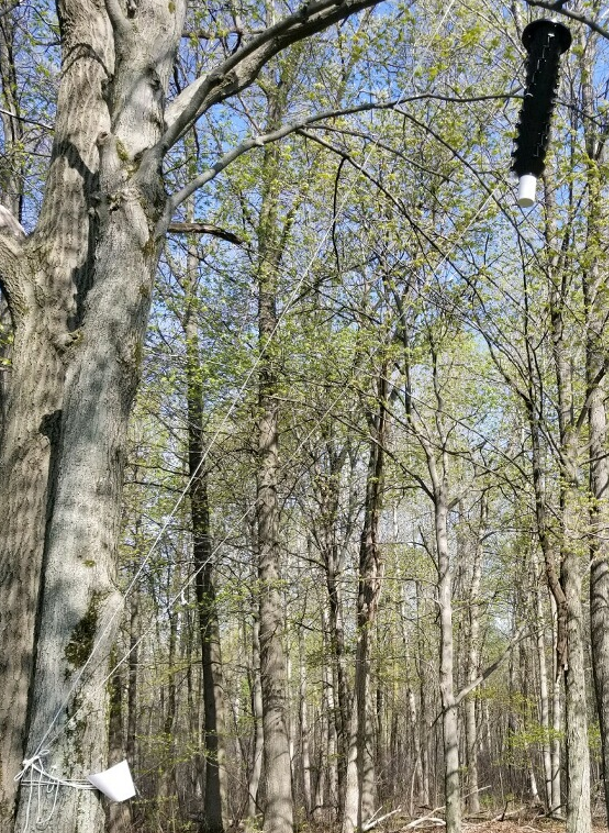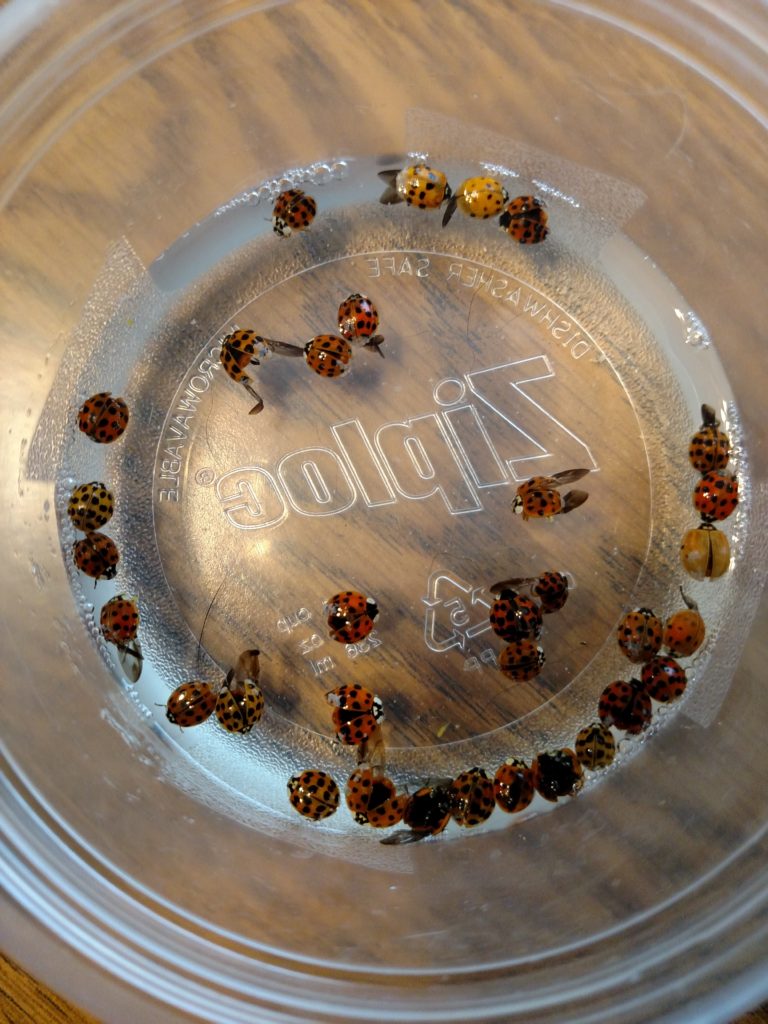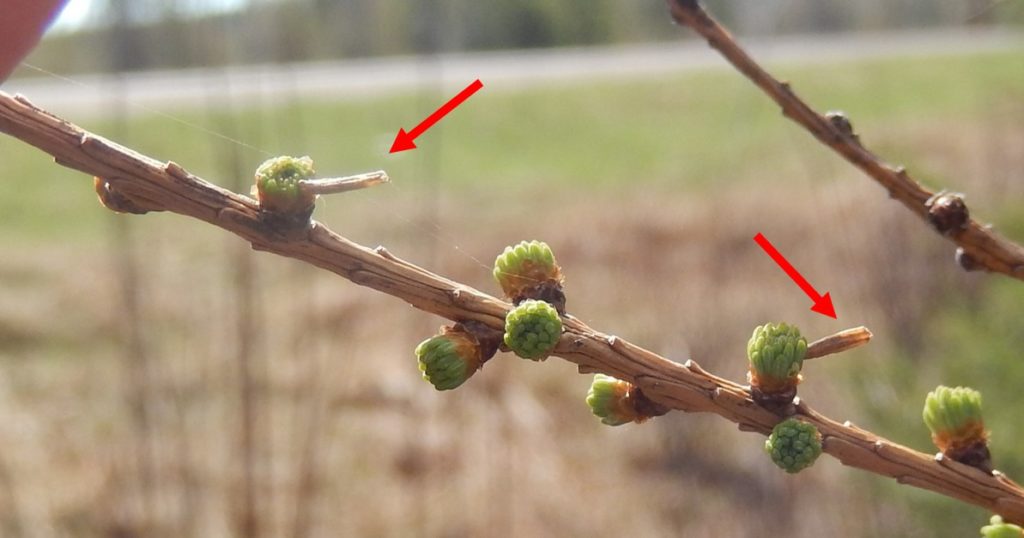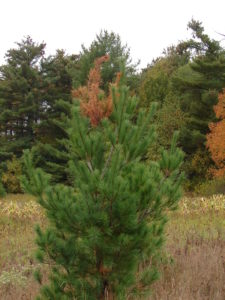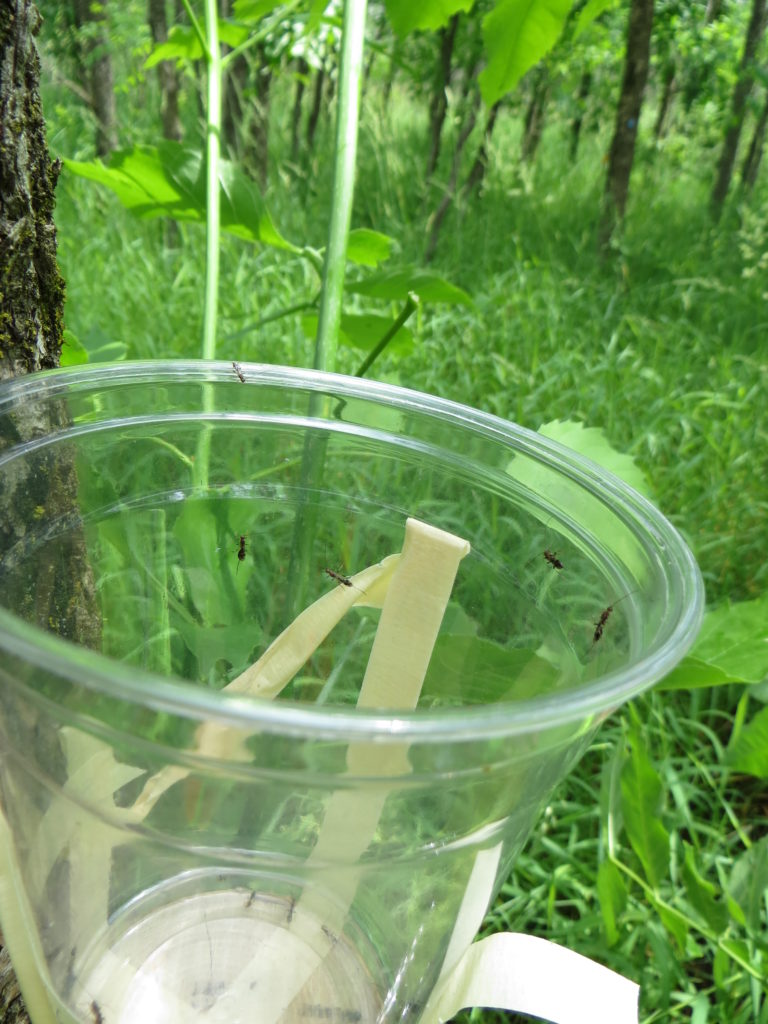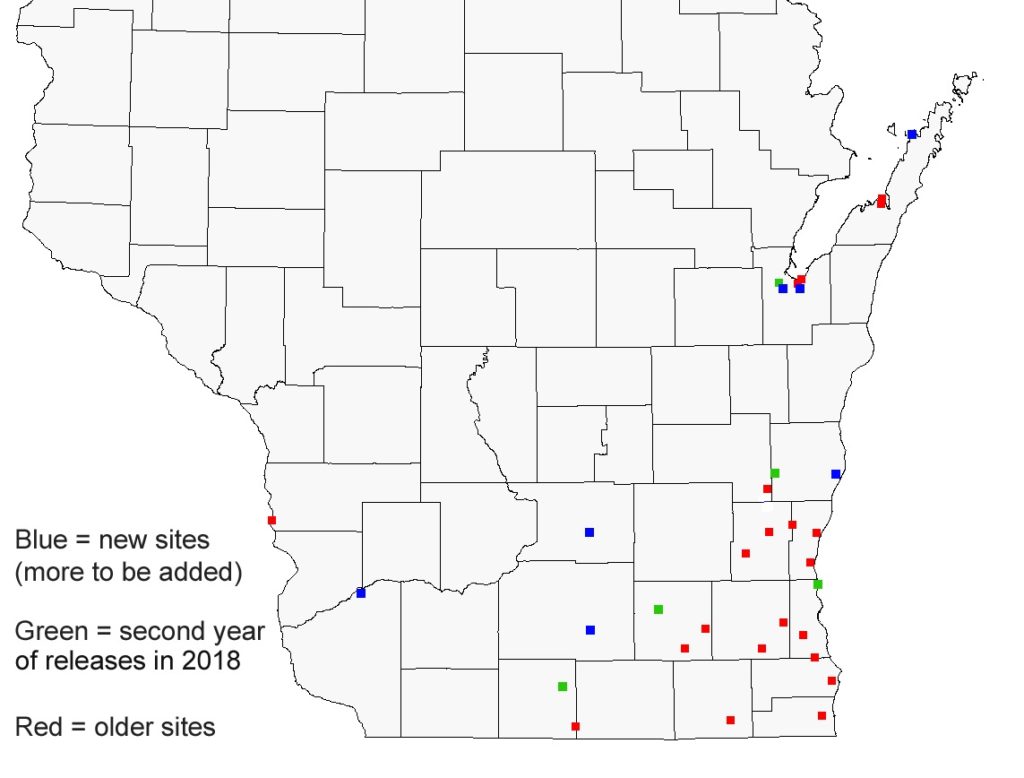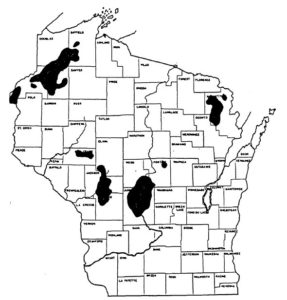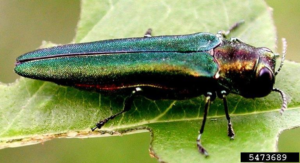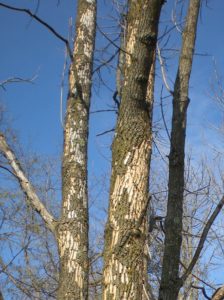By Bill McNee, DNR forest health specialist (Oshkosh), bill.mcnee@wisconsin.gov, 920-360-0942
In a few weeks, gypsy moth egg masses will begin hatching in Wisconsin. Property owners interested in reducing gypsy moth populations should consider oiling or removing reachable egg masses well before the hatch begins. Horticultural oils that suffocate the eggs are available at many garden centers and large retailers. In general, these are applied when temperatures are above 40oF and freezing is not imminent. When physically removing egg masses, scrape them into a can of soapy water and then let them soak for a few days before discarding in the trash in order to kill the eggs. Additional management options for homeowners and woodlot owners are available at the Wisconsin gypsy moth website.
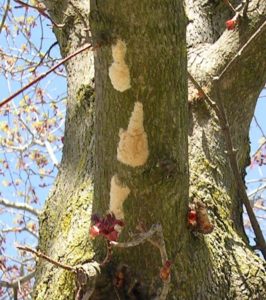
Gypsy moth egg masses
Property owners looking to hire a business to do insecticide treatments this spring should contact them soon. A list of certified arborists is available on the Wisconsin Arborist Association website. Additional businesses offering insecticide treatments may be found in the phone book under ‘Tree Service.’ Homeowners can also purchase insecticides, some of which are applied as soil drenches, at garden centers and large retailers. For larger areas, a list of for-hire aerial applicators is available on the Wisconsin gypsy moth website.
Although this winter’s cold temperatures in late December and early January most likely did not cause heavy egg mortality, the cold period will still help reduce gypsy moth populations this summer. According to the U.S. Forest Service, temperatures of -20°F lasting from 48 to 72 hours can kill exposed eggs. Eggs that are laid higher up on the bark of trees suffer higher mortality than those located near the ground because snow insulates the eggs from cold temperatures. Fluctuating spring temperatures can also cause heavy egg mortality.
2018 suppression spraying:
Dane County will be the only participant in the DNR gypsy moth suppression program in 2018. Aerial spraying will occur in mid- to late May at seven sites in Madison and one site in Sun Prairie. A total of 485 acres will be sprayed with a bacterial insecticide that affects only small caterpillars. Maps of the sites are available on the Wisconsin gypsy moth website.
Slow-The-Spread treatments announced:
The Wisconsin Department of Agriculture, Trade and Consumer Protection (DATCP) announced its planned 2018 Slow-The-Spread (STS) gypsy moth treatments in western counties. About 90,000 acres are scheduled for treatment at 36 sites in 14 counties, using low-flying airplanes. Treatments will begin in May and continue through late July or early August, using either bacterial insecticide or pheromones which cause mating disruption.
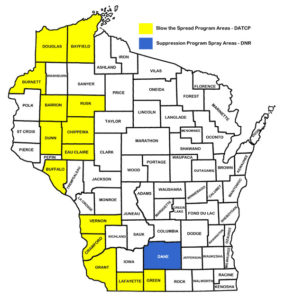
Proposed 2018 gypsy moth treatments will occur in these counties. Counties in yellow are scheduled for Slow-The-Spread (STS) treatments, while Dane County (in blue) will undergo a suppression spray.
Counties scheduled to receive aerial treatments are: Barron (3 sites covering 2,736 acres); Bayfield (1 site, 787 acres); Buffalo (6 sites, 11,754 acres); Burnett (2 sites, 4,529 acres); Chippewa (4 sites, 12,794 acres); Crawford (4 sites, 5,971 acres); Douglas (1 site, 789 acres); Dunn (5 sites, 43,986 acres); Eau Claire (1 site, 674 acres); Grant (1 site, 497 acres); Green (1 site, 392 acres); Lafayette (2 sites, 527 acres); Rusk (1 site, 463 acres); and Vernon (3 sites, 3,785 acres).
More information on STS treatments may be found online at the DATCP Gypsy Moth website.
